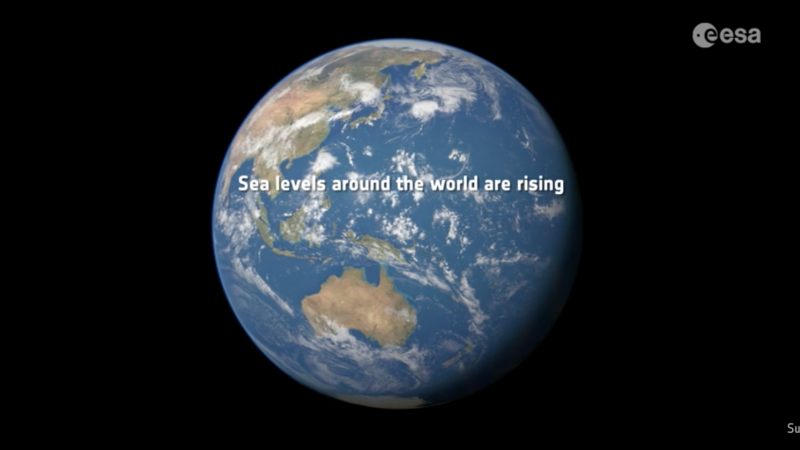Global sea level up 3 cm per decade since 1990s
Scientists can directly measure a change in the height of the ocean’s surface, via satellites. And they can use satellites to see that glaciers have less ice now than they did a few decades ago, and thereby estimate how much ice-melt has gone into the ocean. Plus satellites reveal the fact that the oceans themselves are warming. With that warming comes an expansion of seawater, also causing sea level to rise by some amount. But do the estimates for the amount of sea level rise – based on all the different sorts of studies – agree? On February 10, 2022, the European Space Agency (ESA) released the results of a new comprehensive comparison, showing the numbers from the different studies do match up. Yes, the estimates agree, the mean global sea level has risen by more than an inch (3 cm) per decade since precise satellite measurements began in the 1990s.
The peer-reviewed journal Earth System Science Data published the new comparison study, which was led by scientists at the Dresden University of Technology. ESA explained:
A good third of this rise in sea level is down to thermal expansion. That is, as seawater warms, it expands.
Nearly two-thirds of the rise is because of freshwater being added to the ocean, mainly from the melting of glaciers and from the Antarctic and Greenland ice sheets, but also from the water added to the ocean from land, essentially as a result of groundwater storage depletion.
While we all understand that seas are rising because Earth is getting hotter, scientists need to understand exactly what’s going on. They do this by assessing how these different contributions compare with the overall change in sea level.
In other words, they ‘assess the sea-level budget.’
The 2022 lunar calendars are here. Order yours before they’re gone!

A common sea level framework for experts
Martin Horwath, lead author of the new study, commented:
Assembling this coherent picture of sea-level and ocean-mass budgets not only required advanced datasets from satellite Earth observation and modeling. It also required the experts from various disciplines to arrive at a common framework.
ESA’s Jérôme Benveniste added:
This is the fruit from the continuity in research and development on Earth observation data analysis enabled by ESA’s Climate Change Initiative. The beauty of the results lies in the coherence of all the CCI Essential Climate Variables [key indicators that describe Earth’s changing climate], which, when well-prepared and assembled, give a precise picture of our climate and its trend.
A milestone sea level study
Benveniste pointed out that the work doesn’t stop with this new study, which he called an “impressive milestone.” He said:
… there are still questions to be answered regarding the climate variability and its evolution.
Bottom line: A new comparison of direct measurements of sea level rise – with the causative factors like ice melt and thermal expansion of seawater – shows that global mean sea level has risen by more than an inch (3 cm) per decade since precise satellite measurements began in the 1990s.
The post Global sea level rise: All roads lead to one conclusion first appeared on EarthSky.
0 Commentaires